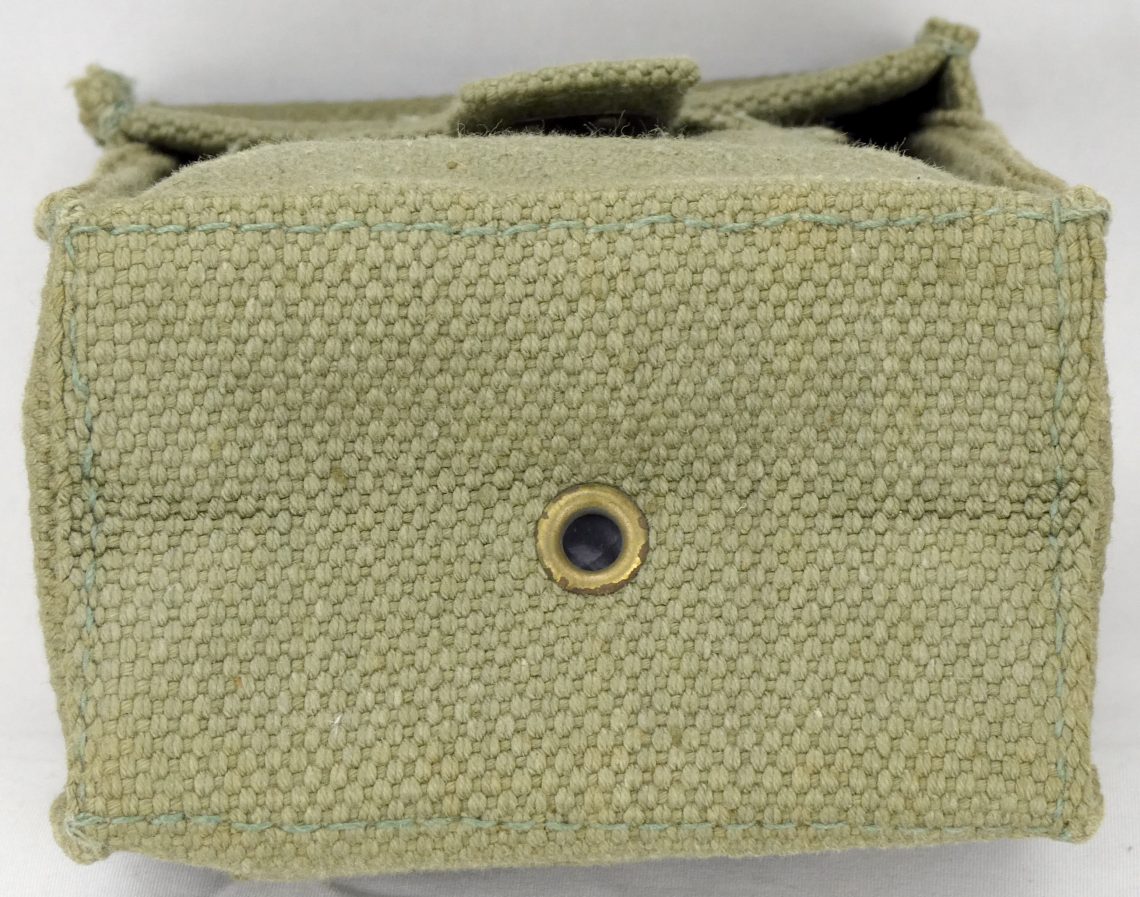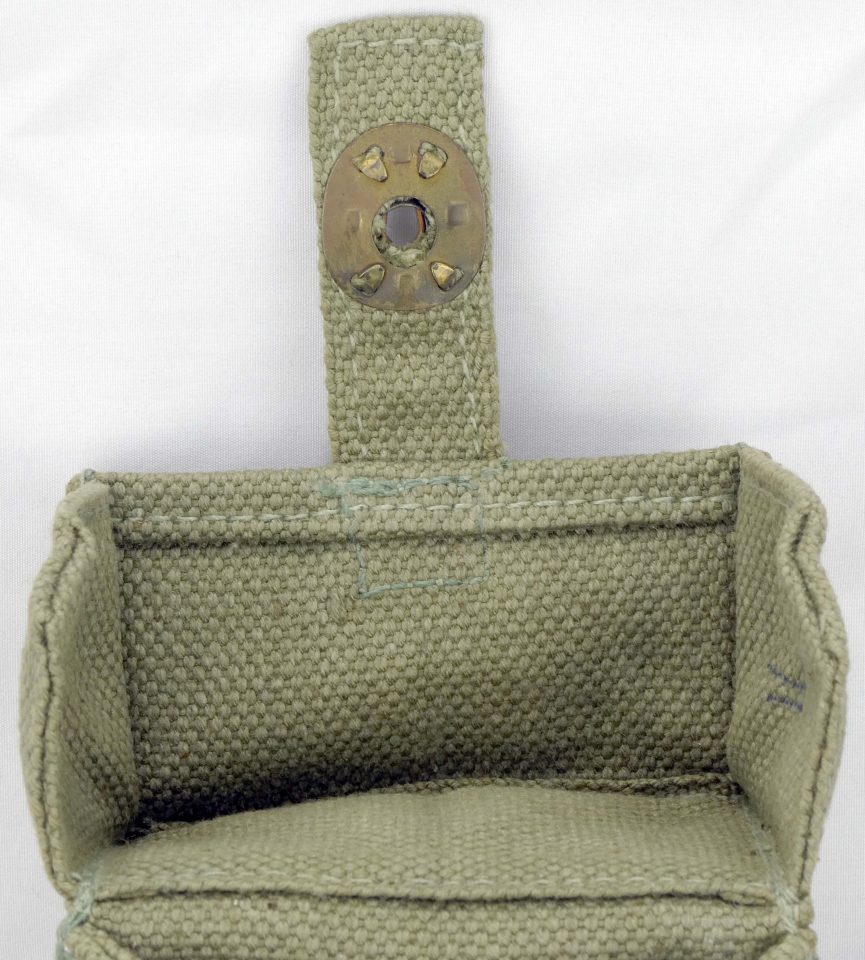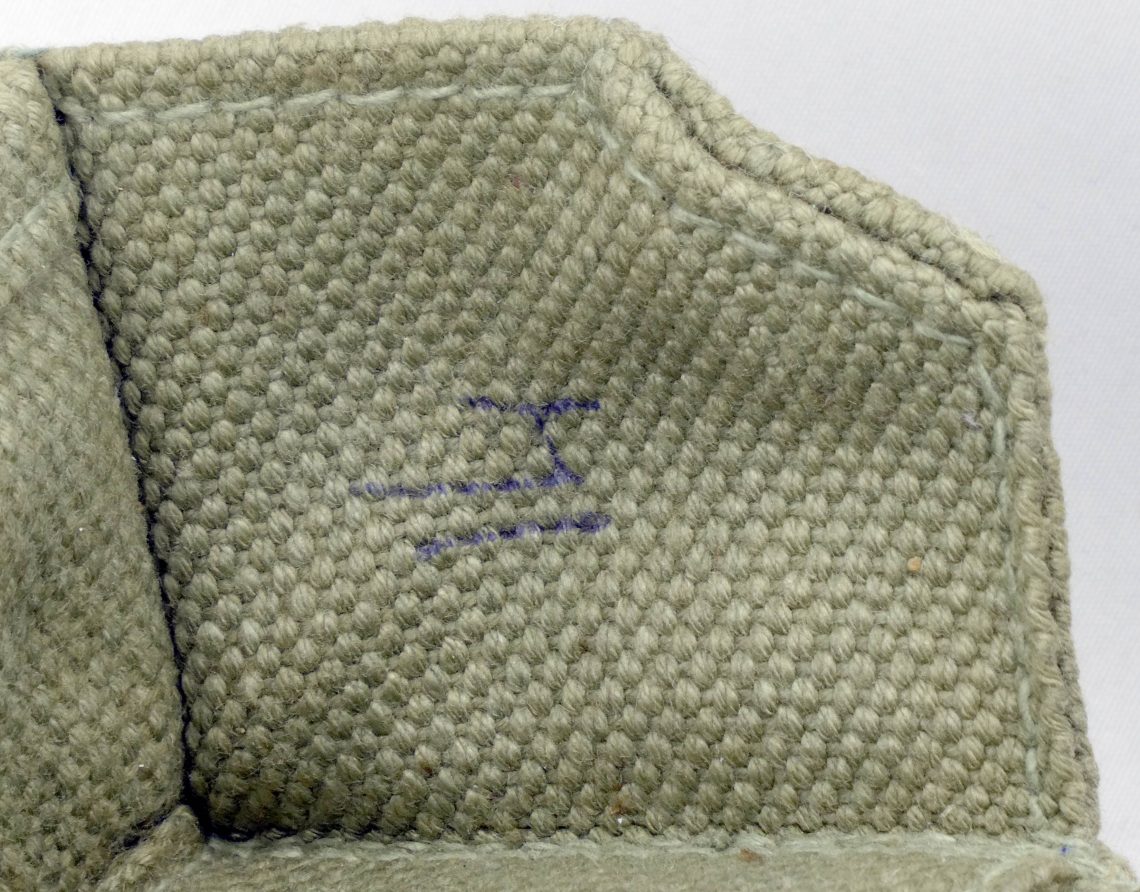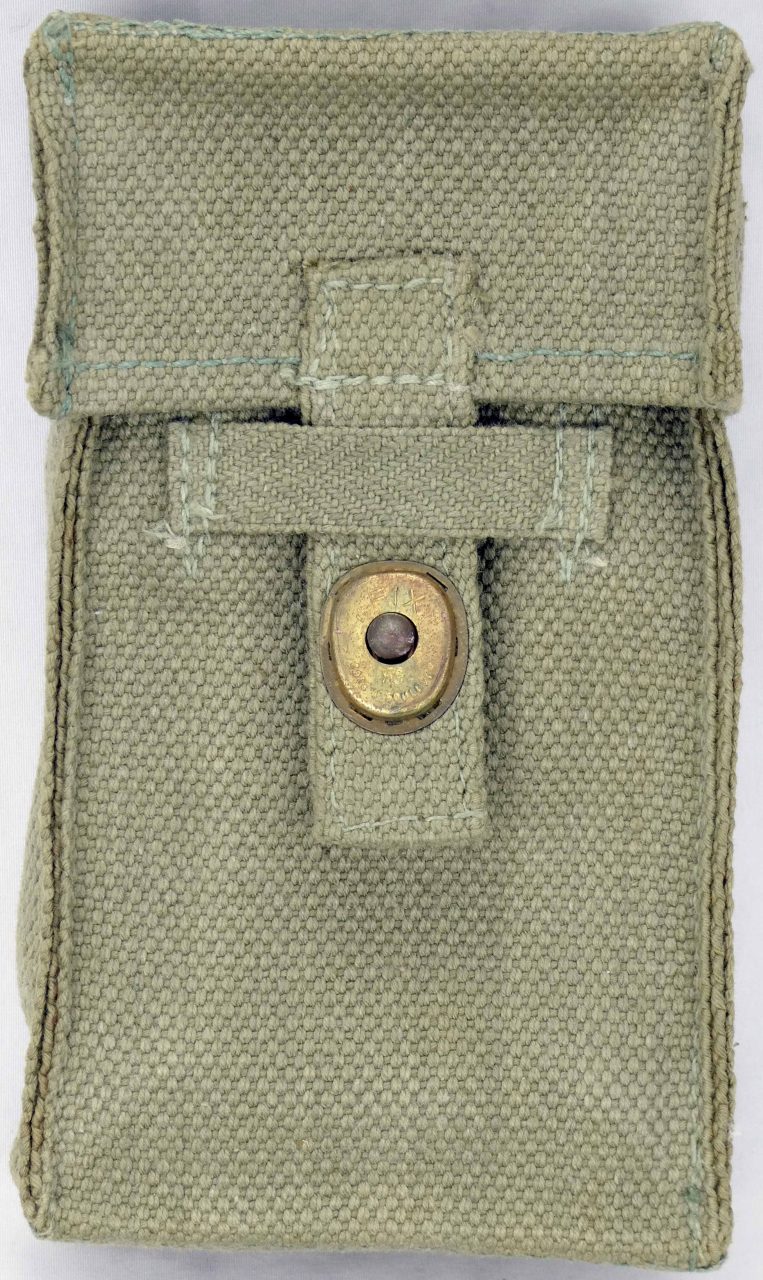These pouches are made from similar canvas material as British and Belgian Pattern 37 webbing. They appear to have been made for the commercial export market and were mainly used in the 1960’s, particularly in Southeast Asia (Laos, Thailand, Vietnam)[1] as well as in Africa (Congo[2], Rhodesia[3]).
M16 Version:


This pouch is sized to fit two 20-round M16 magazines and is designed to slide over a webbing belt.

Sides:


Top:

Bottom:

Drain hole on bottom.
Inside:


Lid Markings:


Usage Photos:
Uzi Version:
Congo Mercenary:
A photo of a mercenary in the Congo using an Uzi pouch can be seen here: https://www.shutterstock.com/editorial/image-editorial/soldiers-having-break-288826g.
Rhodesia:

South Vietnam:

The South Vietnamese Marine in this photo immediately preceding Eddie Adam’s Saigon Execution photo, which received the 1969 Pulitzer Prize for Spot Photography [7], is also using a longer Uzi version.
M16 Version:

Used in Thailand by Detachment A41 of the 46th Special Forces Company and their Thai advisees. Also used by the Royal Lao army[1].
